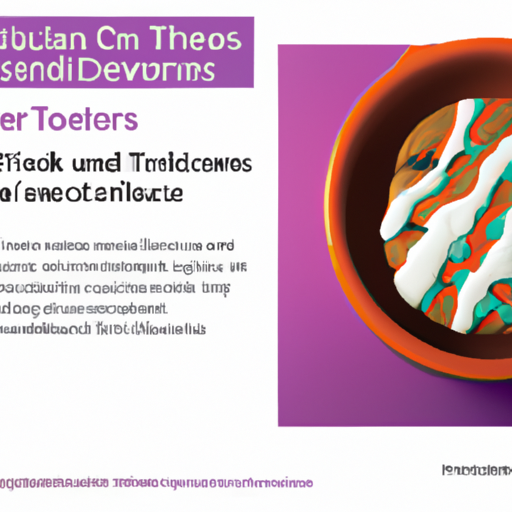Have you ever wondered if you can bake acrylic paint? Perhaps you’ve been experimenting with different art techniques and want to explore new possibilities. In this article, we will explore the question of whether baking acrylic paint is a viable option. We’ll discuss the potential benefits and risks of attempting this method, plus offer some tips for those curious to give it a try. So, let’s dive straight into the fascinating world of acrylic paint baking and uncover what it has to offer!
Can You Bake Acrylic Paint
Baking Acrylic Paint: An Overview
If you are an art enthusiast or a beginner in the world of acrylic painting, you may have wondered if it is possible to bake acrylic paint. Baking paint is a common practice for some art mediums, such as ceramics or clay, but when it comes to acrylic paint, it’s a different story. In this article, we will delve into the world of acrylic paint and explore whether baking it is a viable option or not. We will also discuss safety precautions, materials required, alternative methods to set the paint, common problems, and more. So, get your paintbrushes ready as we embark on this artistic journey together.
Understanding Acrylic Paint
Before we dive into the topic of baking acrylic paint, it is important to have a solid understanding of what acrylic paint is. Acrylic paint is a versatile and popular medium used by artists worldwide. It is made up of pigment particles suspended in an acrylic polymer emulsion, which acts as a binder. This binder gives the paint its adhesive properties and allows it to adhere to various surfaces, such as canvas, paper, wood, or even metal.
One of the unique characteristics of acrylic paint is its fast-drying nature. Unlike other paint mediums, acrylics dry quickly, which is often advantageous for artists who want to layer or blend colors without waiting for an extended period of time. Additionally, acrylic paint is known for its vibrant hues, durability, and flexibility, making it a favorite among artists of all skill levels.

Baking Acrylic Paint: Is it Possible?
The burning question remains: can you bake acrylic paint? The short answer is no, baking acrylic paint is not recommended. Unlike clay or ceramics, where baking helps solidify and set the material, acrylic paint is best left to air dry. Baking acrylic paint can result in undesirable outcomes, such as paint discoloration, cracking, or even emitting toxic fumes.
Acrylic paint is designed to dry when exposed to air. The process involves the evaporation of water and other solvents present in the paint, leaving behind a solid layer of pigments bound together by the acrylic polymer. heat applied during the baking process can interfere with this drying process and cause the paint to dry unevenly or become brittle.
Safety Precautions for Baking Acrylic Paint
While baking acrylic paint is not recommended, it is crucial to prioritize safety precautions when working with any art materials. Always ensure you are in a well-ventilated area to minimize exposure to any fumes that may be released during the drying process. In addition, wearing protective gloves and a mask is highly recommended to protect your skin and respiratory system from any potential harm.
Furthermore, it is important to remember that acrylic paint may contain toxic pigments or chemicals. Always read the labels on your paint tubes and follow any safety instructions provided by the manufacturer. If you have any concerns about the safety of a particular brand or color of paint, it is best to consult the manufacturer directly or seek advice from a professional artist.

Materials Required for Baking Acrylic Paint
Although baking acrylic paint is not advisable, there are certain materials you will need to work with acrylic paint and ensure proper drying. Here is a list of essential materials for your acrylic painting journey:
-
Acrylic Paint: Choose a high-quality brand of acrylic paint that suits your artistic needs and preferences.
-
Palette: Use a palette to mix and organize your paint. A palette can be made of plastic, glass, or even a disposable surface like a paper plate.
-
Brushes: Invest in a variety of brushes to achieve different textures and effects in your paintings. Synthetic brushes are often recommended for use with acrylic paint.
-
Canvas or Painting Surface: Select a suitable surface for your painting. Canvas, wood, paper, and even metal can serve as viable options.
-
Water and Palette Knife: Keep a container of clean water nearby for rinsing your brushes, and a palette knife for mixing colors and applying the paint.
-
Easel or Work Surface: To provide stability and a comfortable working position, consider investing in an easel or finding a stable work surface.
Step-by-Step Guide to Baking Acrylic Paint
While baking acrylic paint is not recommended, it is important to know the correct process for drying acrylic paint to achieve the best results. Here is a step-by-step guide to drying acrylic paint:
-
Prepare your painting surface: Whether you are using canvas, paper, or another surface, ensure it is clean and free of dust or debris. If necessary, apply a base layer of gesso to prime the surface.
-
Squeeze out your acrylic paint: Select the colors you wish to work with and squeeze a small amount onto your palette.
-
Dip your brush into water: Before applying the paint, dip your brush into clean water and gently shake off any excess. This will help keep your brushes clean and prevent the paint from drying too quickly.
-
Apply the paint: Begin applying the paint to your surface using your chosen brushes. Experiment with different brush strokes and layering techniques to achieve your desired effect.
-
Allow the paint to dry: Once you have finished painting, allow the artwork to air dry completely. This process may take anywhere from a few hours to a couple of days, depending on the thickness of the paint and the humidity of your environment.
-
Optional: apply a varnish or sealant: Once your painting is fully dry, you may choose to apply a varnish or sealant to protect and enhance the longevity of the artwork. Follow the instructions provided by the specific varnish or sealant product.
Remember, the beauty of acrylic paint lies in its ability to dry and cure naturally, without the need for artificial processes like baking.

Alternative Methods to Set Acrylic Paint
If you are looking for alternative methods to set your acrylic paint and speed up the drying process, there are a few options worth exploring:
-
Air-drying with a fan: Placing a fan near your artwork can help circulate the air and expedite the drying process. However, ensure the fan is not blowing directly onto the painting, as it may cause unwanted texture or distort the paint.
-
Using a hairdryer: Using a hairdryer on a low or cool setting can also help accelerate the drying time. Keep the hairdryer at a safe distance and continuously move it around to avoid overheating or concentrated heat on one area.
-
Adding a drying medium or retarder: Some artists choose to add a drying medium or retarder to their acrylic paint to extend the drying time or achieve different effects. These products can be mixed with the paint on the palette before application.
Always remember to experiment with different techniques and applications to find what works best for your artistic style and preferences.
Common Problems with Baking Acrylic Paint
When considering baking acrylic paint, it is important to be aware of the potential problems that can arise. These problems can include:
-
Paint discoloration: The high heat of baking can cause acrylic paint to change color or become discolored, resulting in a less vibrant or even muddy appearance.
-
Paint cracking: Baking acrylic paint can cause the paint to become brittle and prone to cracking, which can ruin the integrity of your artwork.
-
Toxic fumes: Acrylic paints contain volatile organic compounds (VOCs), which can release toxic fumes when exposed to high heat. Inhaling these fumes can be harmful to your health, so it is best to avoid baking acrylic paint altogether.
-
Uneven drying: Heat applied during the baking process can cause the paint to dry unevenly, resulting in an unbalanced composition or texture on the artwork.
By avoiding the temptation to bake acrylic paint, you can prevent these common problems and ensure the longevity and quality of your artwork.

Conclusion
In conclusion, while baking acrylic paint may seem like a quick solution to speed up the drying process, it is not recommended. Acrylic paint is designed to dry naturally when exposed to air, and attempting to bake it can lead to a host of problems, such as paint discoloration, cracking, and toxic fumes. Instead, embrace the natural drying process of acrylic paint and utilize alternative methods like air-drying or using a fan to expedite the process if desired. Remember to always prioritize safety precautions and choose high-quality materials for your acrylic painting journey. Happy painting!
FAQs
Q: Can I use a conventional oven to bake acrylic paint? A: No, it is not advisable to use a conventional kitchen oven to bake acrylic paint. The heat in a kitchen oven can fluctuate, leading to uneven drying and potentially harmful fumes.
Q: Will baking acrylic paint make it dry faster? A: Baking acrylic paint may cause the surface to dry faster, but the paint layers underneath may still remain wet. This can result in an uneven drying process, leading to cracked or compromised artwork.
Q: Can I use a heat gun or blowtorch to dry acrylic paint? A: Using a heat gun or blowtorch to dry acrylic paint is not recommended due to the potential for overheating or scorching the paint. These heat sources can also cause the paint to bubble or create unwanted textures.
Q: How long does acrylic paint take to dry naturally? A: The drying time for acrylic paint varies depending on factors such as humidity, thickness of paint application, and ventilation. Generally, acrylic paint can take anywhere from a few hours to a couple of days to dry completely.
Q: Can I bake a painting that has already dried? A: It is not necessary to bake a painting that has already dried naturally. Once dried, acrylic paint forms a permanent and durable layer on the surface, making it unnecessary to subject it to baking or other artificial drying processes.




